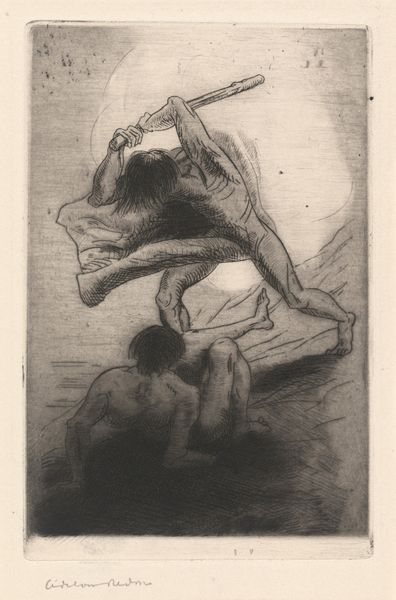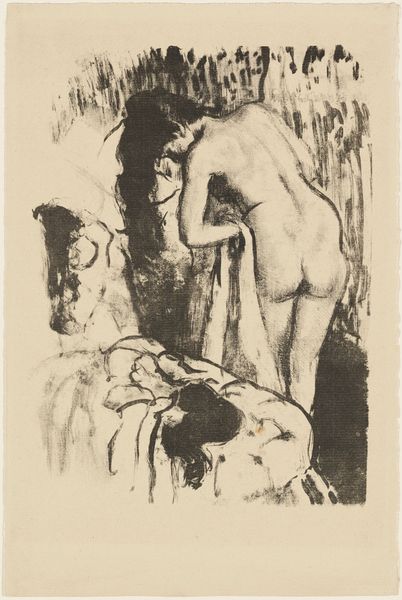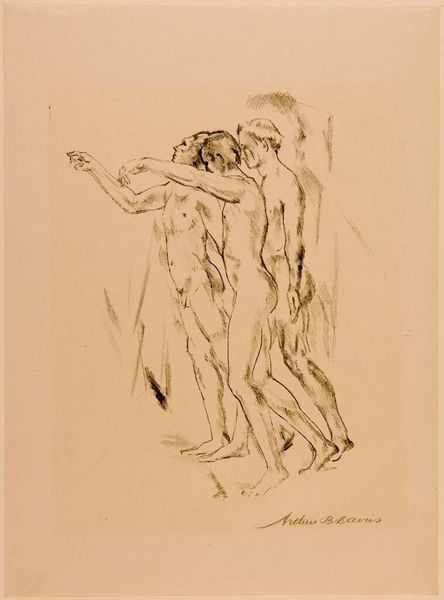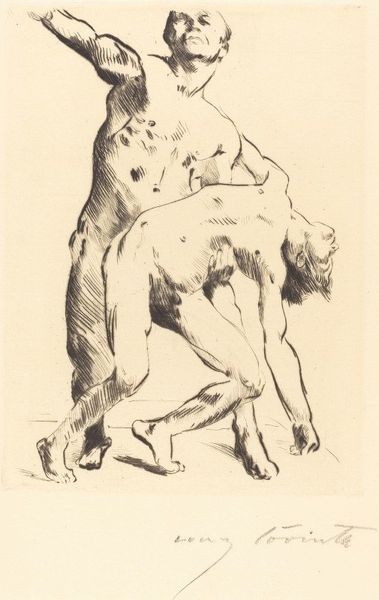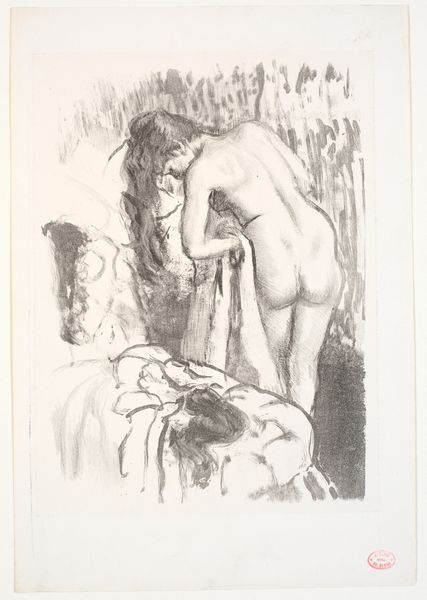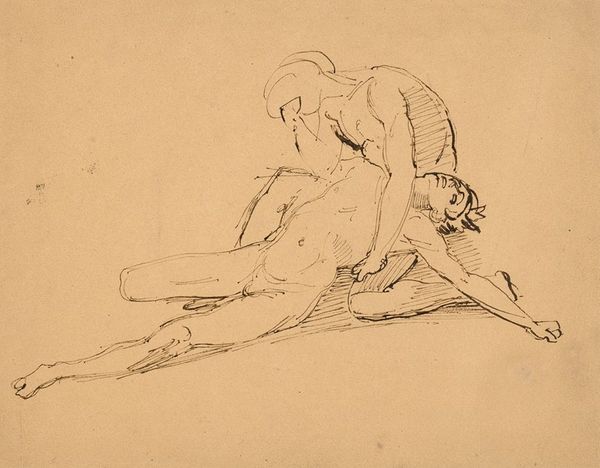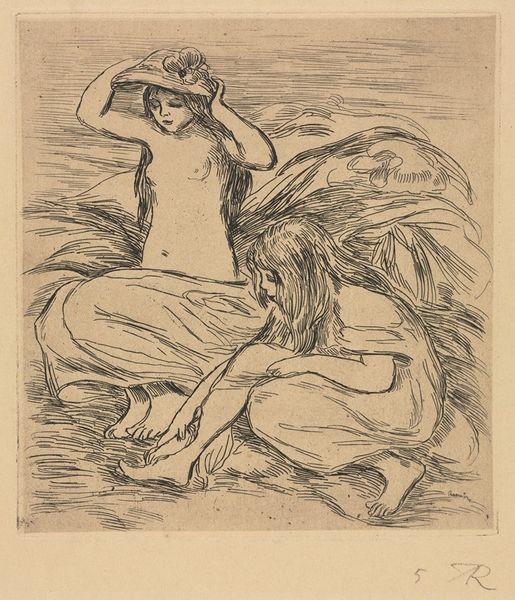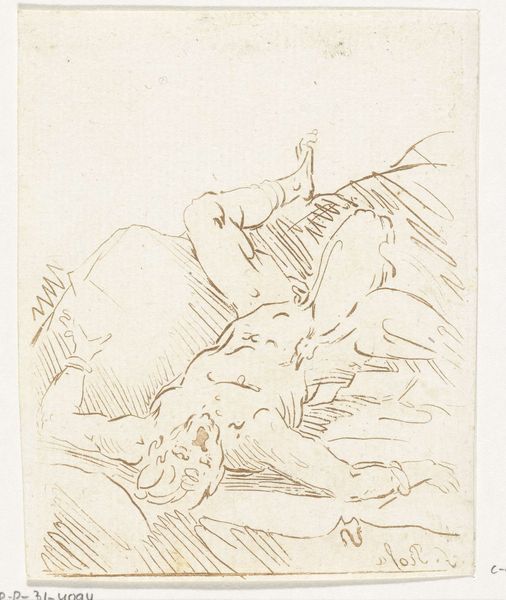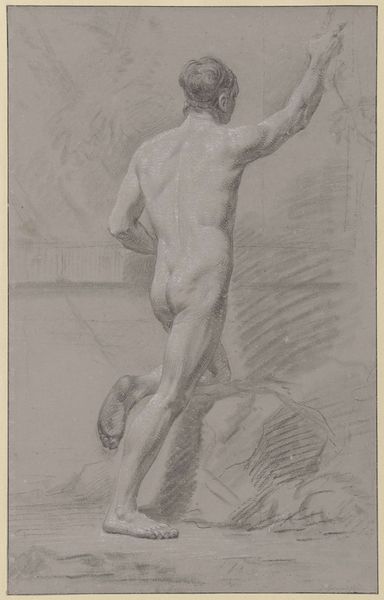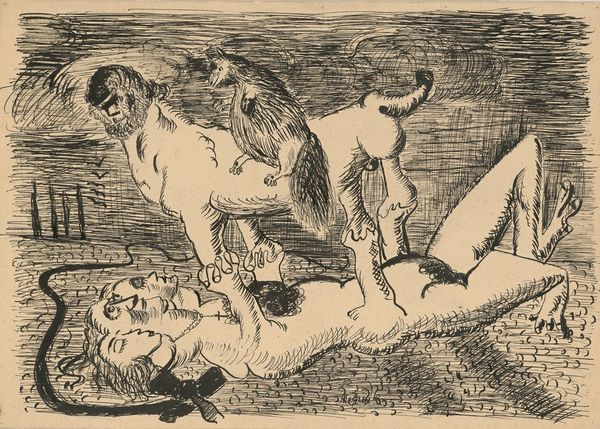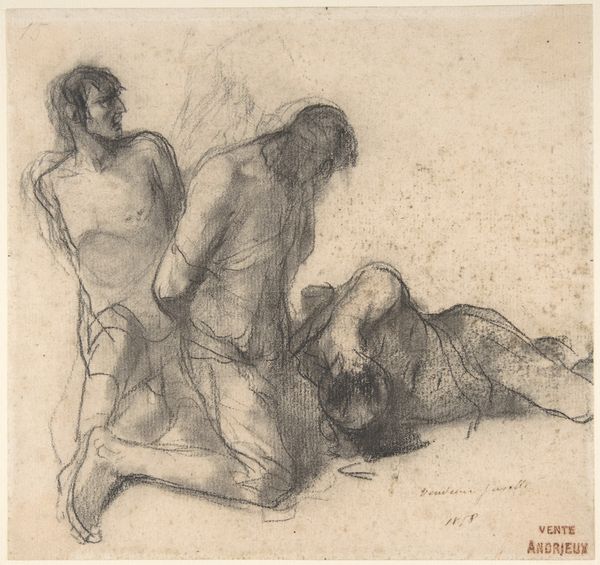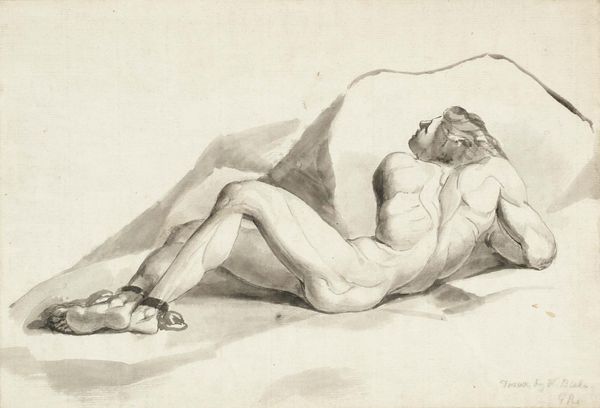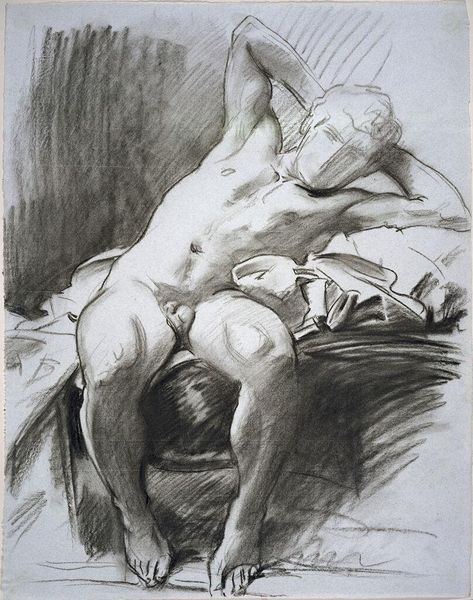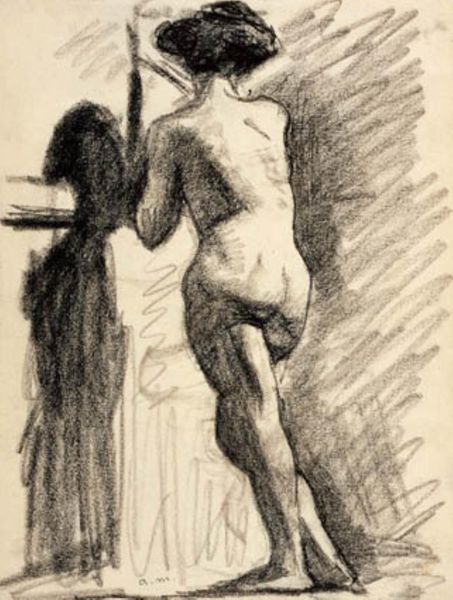
drawing, print, paper, ink, engraving
#
drawing
#
narrative-art
# print
#
figuration
#
paper
#
ink
#
symbolism
#
history-painting
#
engraving
Copyright: Public Domain: Artvee
Odilon Redon made this print of Cain and Abel in late nineteenth-century France. It’s a vision of primal violence, but also of the social origins of guilt. The image draws on the biblical story of two brothers: one, a shepherd, favored by God; the other, a farmer, whose offering is rejected. Out of jealousy, Cain murders Abel. Redon’s print shows the moment of fratricide, with Cain standing over his brother, club raised high. The stark black and white contrasts and rough lines heighten the drama. But look closely. Redon wasn’t just illustrating a Bible story. He was engaging with contemporary debates about crime, heredity, and social justice. The story of Cain was often invoked in arguments about the origins of criminality. Was it innate, or a product of social conditions? Redon’s image leaves the question open, inviting us to consider the complex interplay of individual will and social forces. To understand Redon’s print fully, we can explore nineteenth-century French literature, philosophy, and science, to better understand the history of crime, and the history of social inequality.
Comments
No comments
Be the first to comment and join the conversation on the ultimate creative platform.
